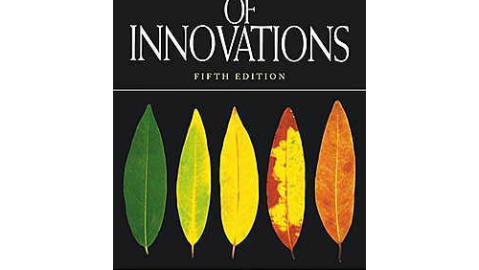Diffusion of Innovations for Dummies

Question: What do VCRs, Betamax players, condom use in Thailand, and hybrid corn seeds in Iowa have in common?
Answer: The adoption of these innovations each followed a logical, predictable framework that can be applied to (most) any innovation.
The Diffusion of Innovations theory has been used in hundreds of studies including fields such as education, social sciences, health, agriculture, anthropology, business, and economics. In short, it has been used a lot to help understand the adoption of innovations independent of time, space, and location.
School leaders often are charged with trying to get more stakeholders to adopt a given innovation quicker. For school leaders trying to implement technology-suffused change, this innovation adoption framework is especially useful. The theory describes five intrinsic innovation characteristics that impact the adoption of an innovation. These are useful when trying to understand how or why innovations are or are not adopted.
Relative Advantage. The introduction of an innovation replaces or modifies an existing practice. Innovations in classrooms often fail because teachers feel overburdened and thus most innovations are seen as “just something else to do.” Thus technological innovations in schools might be introduced as something that reduces work, makes a job easier, allows a person to do their job better, expands personalization, or eases the workload. Think of this as the ‘build a better mousetrap’ principle.
Complexity. Initiating technology-based reforms usually means that a teacher needs to learn new software or incorporate a new technology into her classroom practices. Continued professional development is essential to get teachers on board. Having a one-off training day is not enough. We have seen schools successfully use students as dedicated teacher tutors, implement technology hotlines, use social networking as tech support, and include one-on-one training. This can be thought of as the ‘keep it simple’ principle.
Compatibility. Any technology innovation must be compatible to the needs of the end user. If a school implements a 1:1 laptop initiative then it needs to be compatible with the needs and behaviors of students and teachers. Thus school leaders need to understand how stakeholders will use the devices and for what purposes. Knowing this will inform the decision about whether to adopt laptops, tablets, smartphones, or implement a ‘bring your own device’ (BYOD) policy. This characteristic also would include filtering policies. If teachers and students regularly rely on Google applications and the district blocks these tools, then the compatibility principle is harmed. Think of this as the ‘dress for the occasion’ principle.
Trialability. For innovations to take hold, people need to try an innovation before they commit to it. This includes giving guided practice and plenty of one-on-one assistance where needed. Keep in mind that not everyone needs the same amount of guided practice. This practice should be differentiated. Think of this as the ‘try before you buy’ principle.
Observability. Teachers need to see others using the innovation. For example, if the innovation is using iPads to evaluate students, teachers need to see other teachers doing this and also need to see administrators using iPads to evaluate teachers. Think of this as the ‘monkey see, monkey do’ principle.
As a school leader who is about to launch a technological innovation, have you planned for these characteristics?
As a school leader who has seen a technological innovation fall short of expectations, was one or more of these characteristics missing?
As a school leader who is in the middle of implementing a technological innovation, do you see these characteristics as vital?





